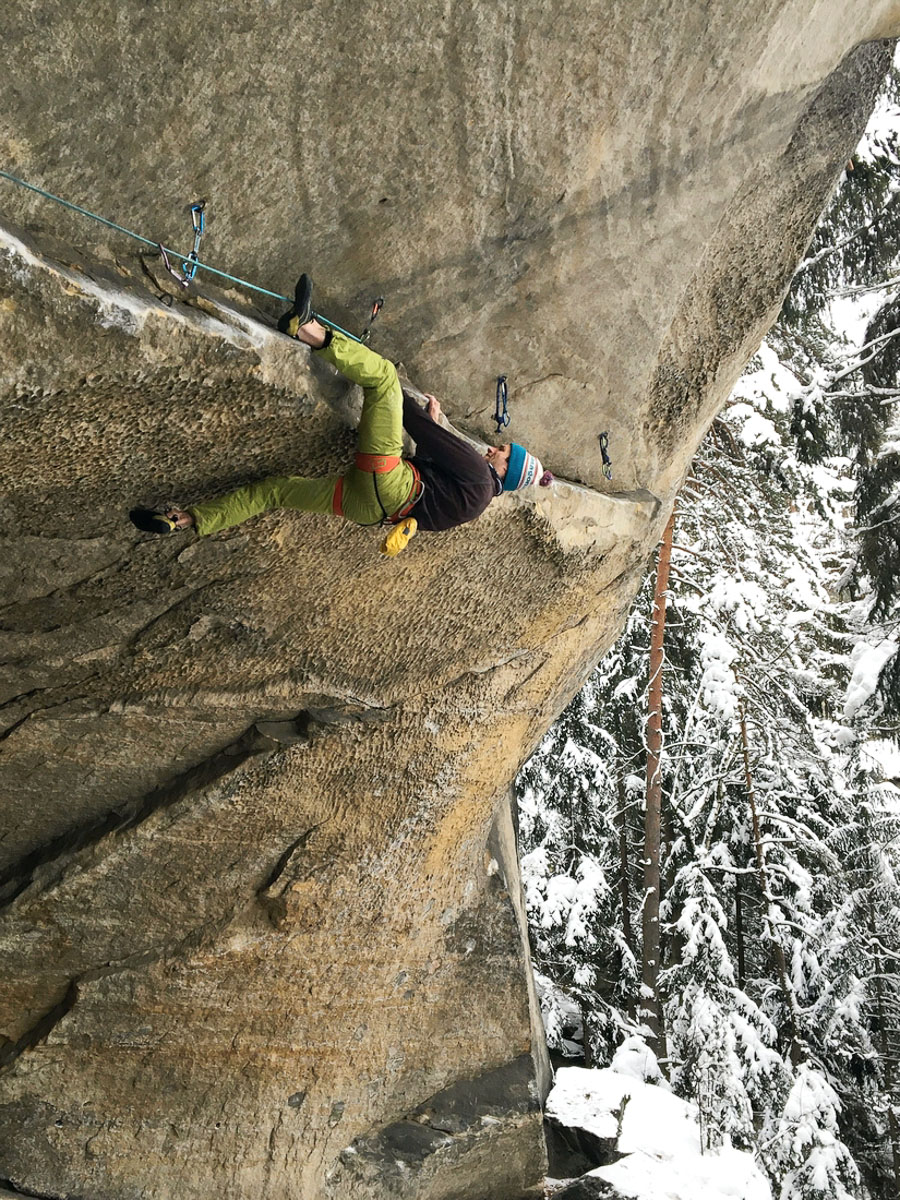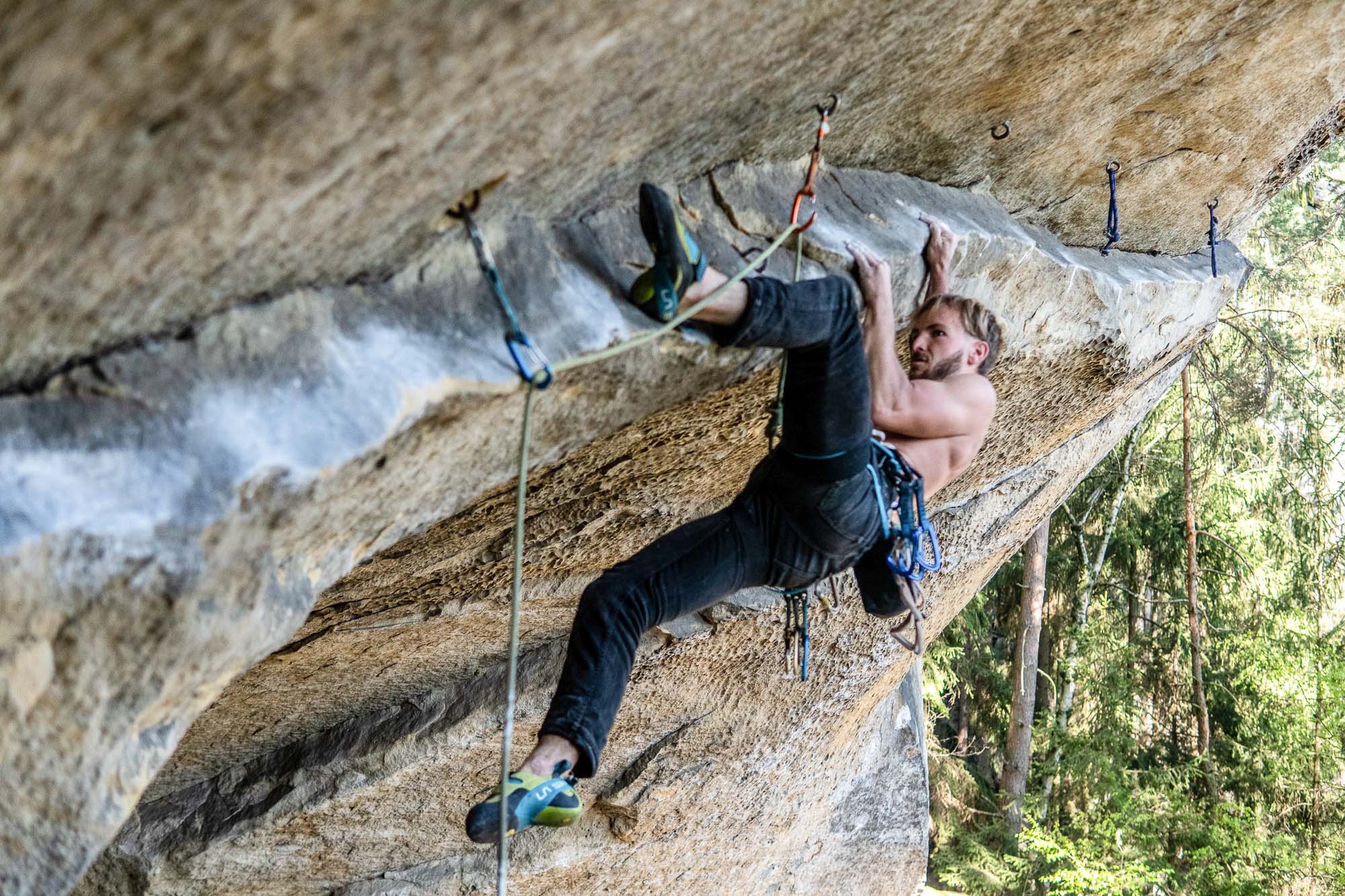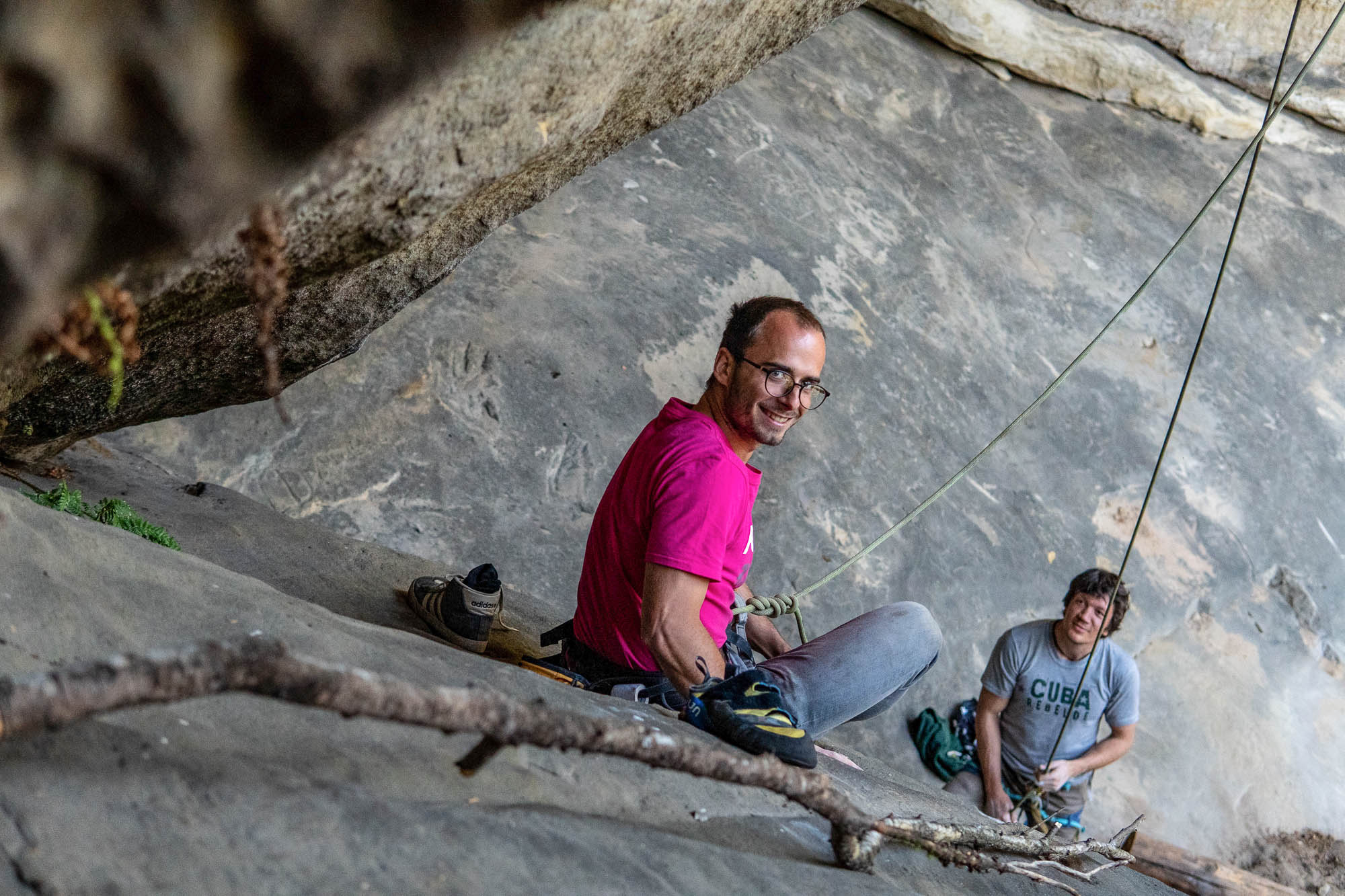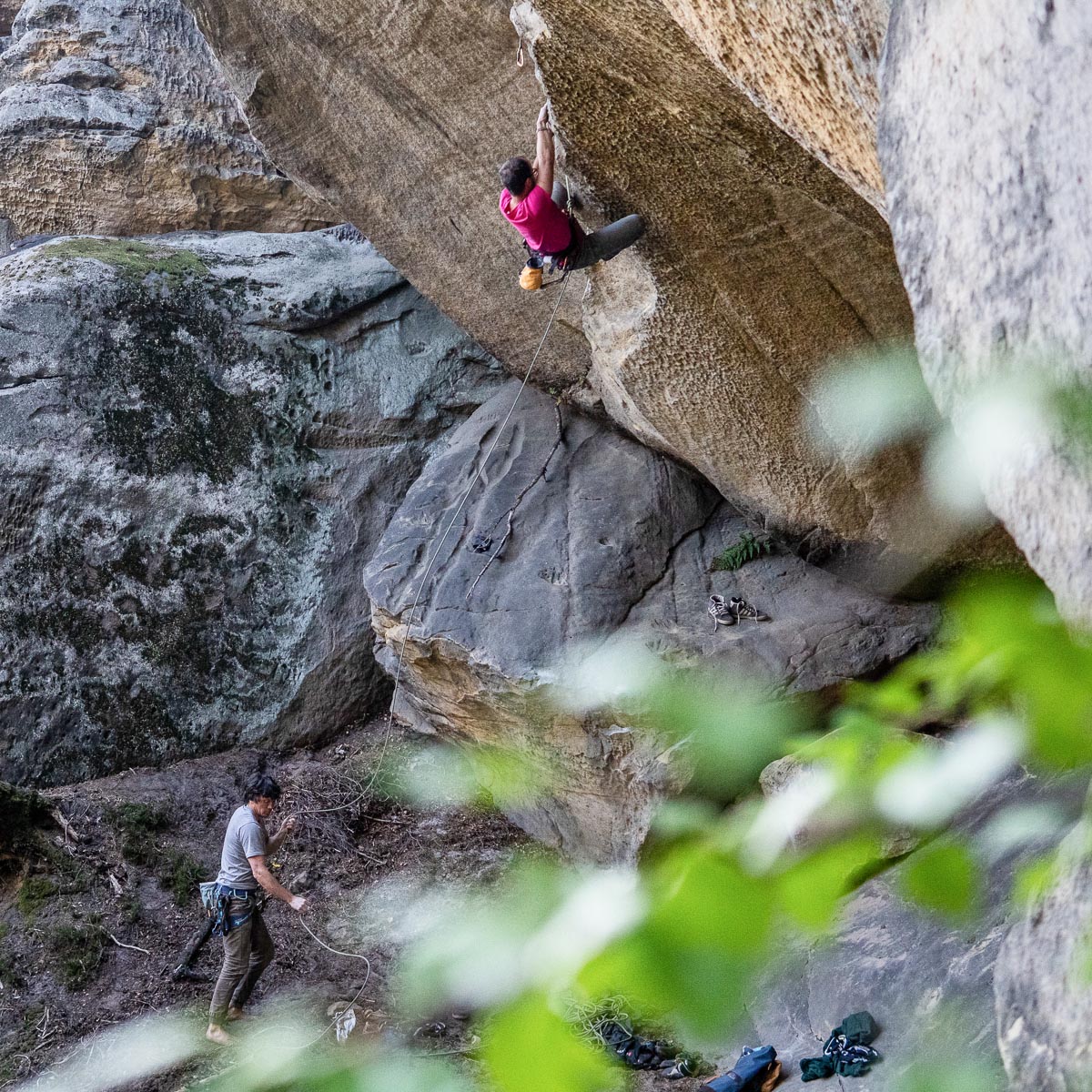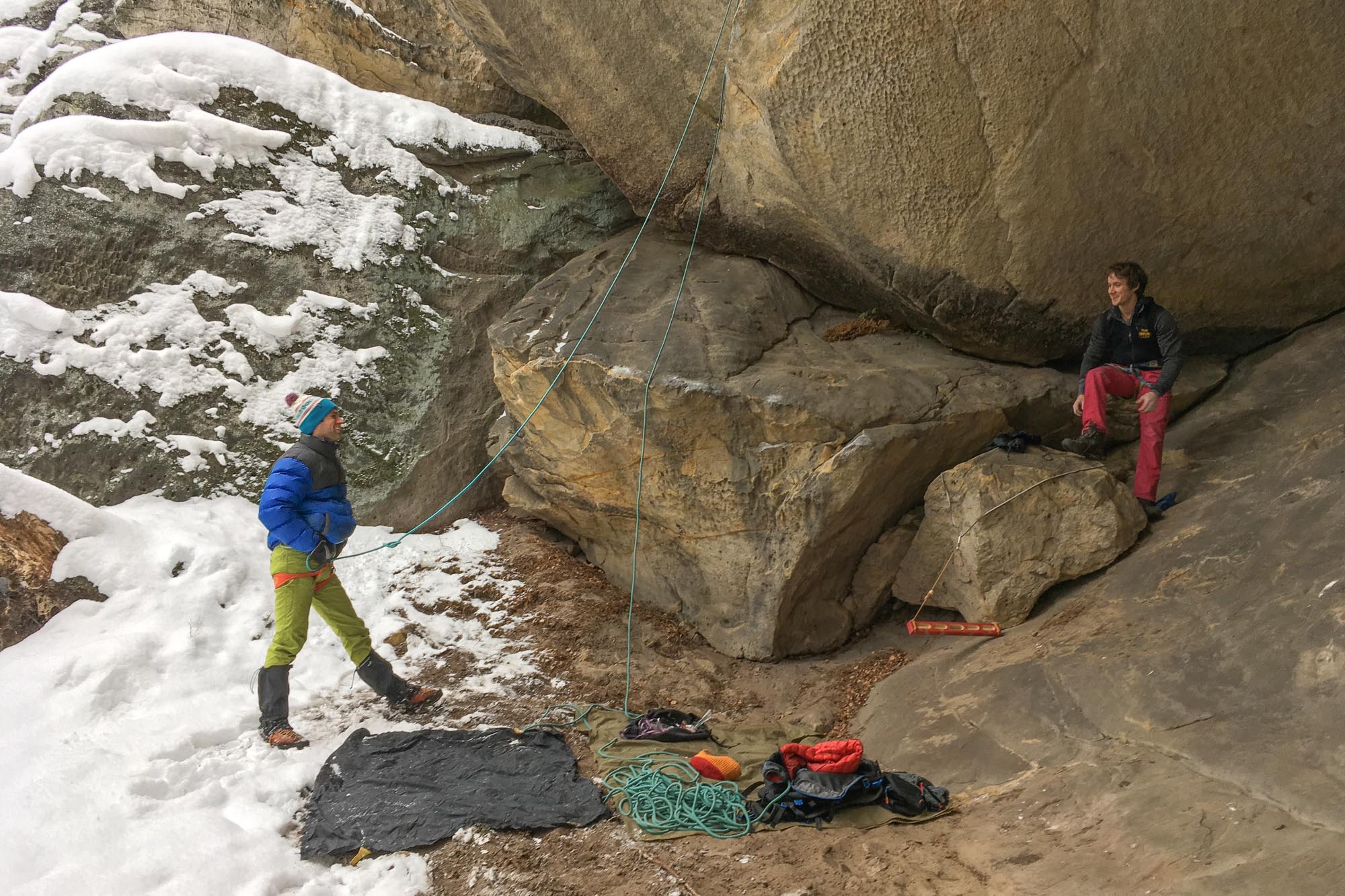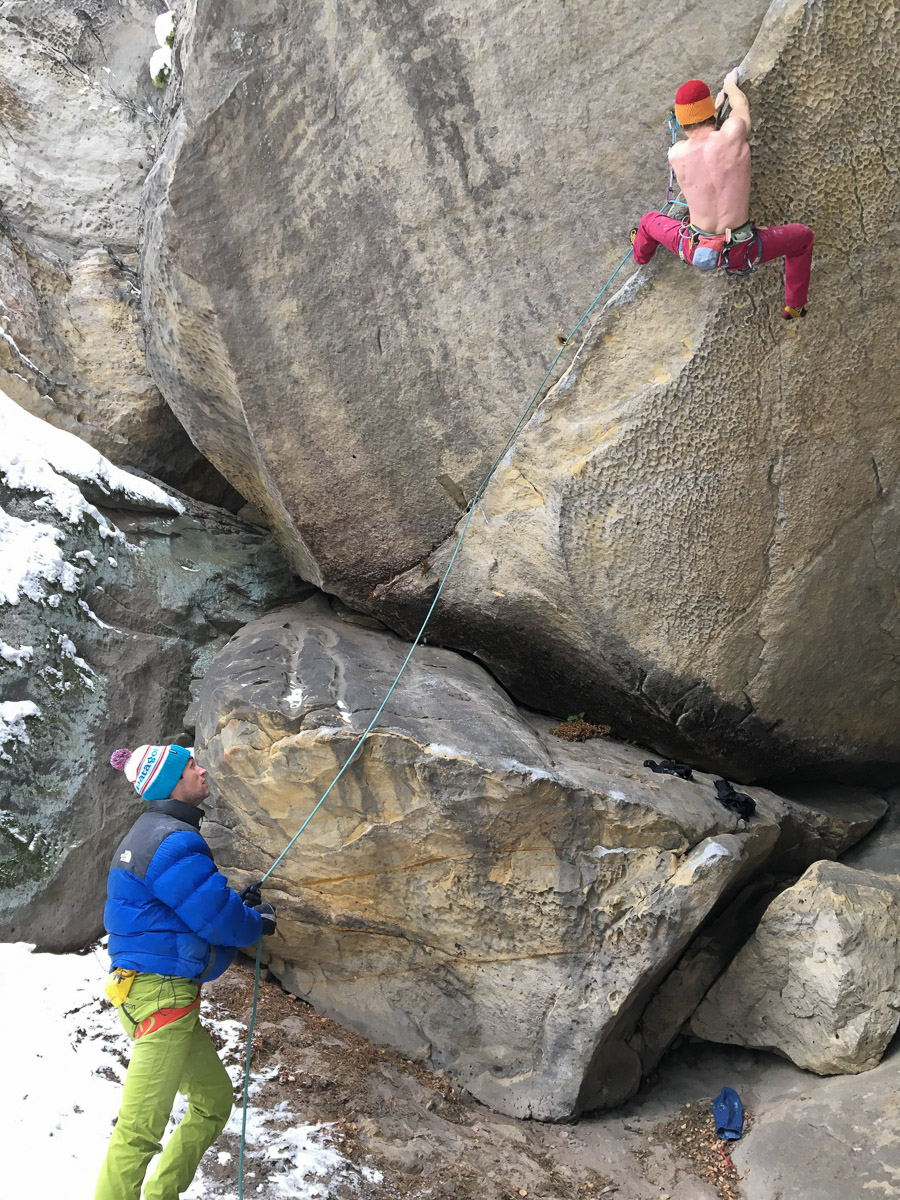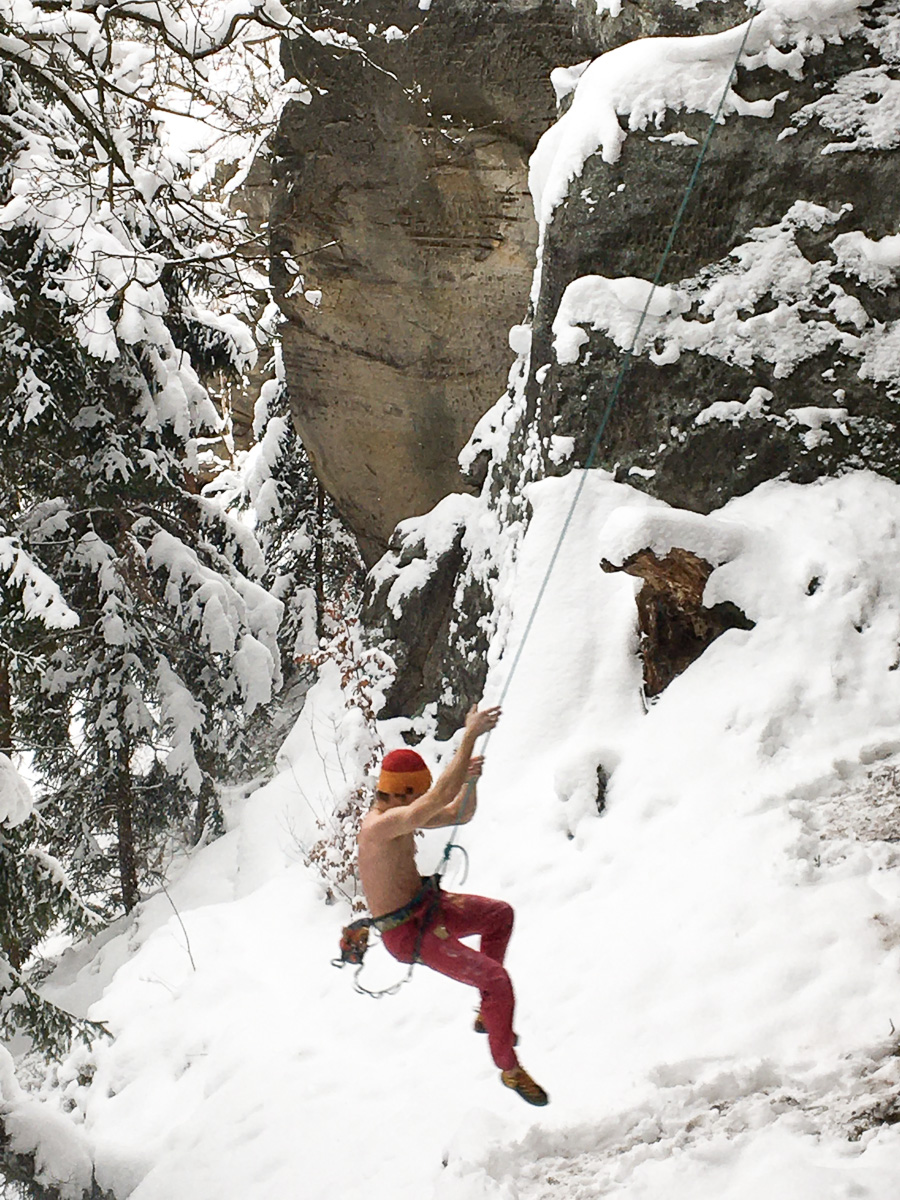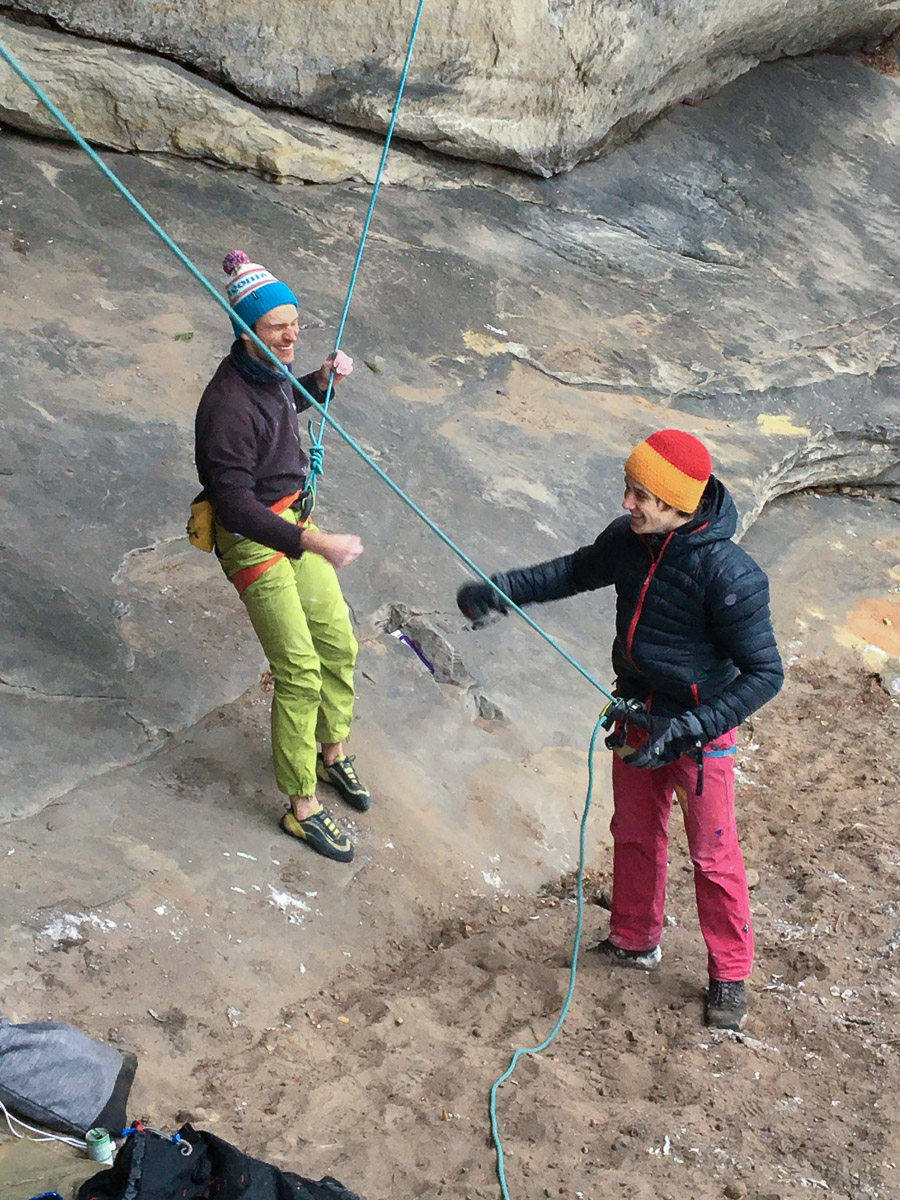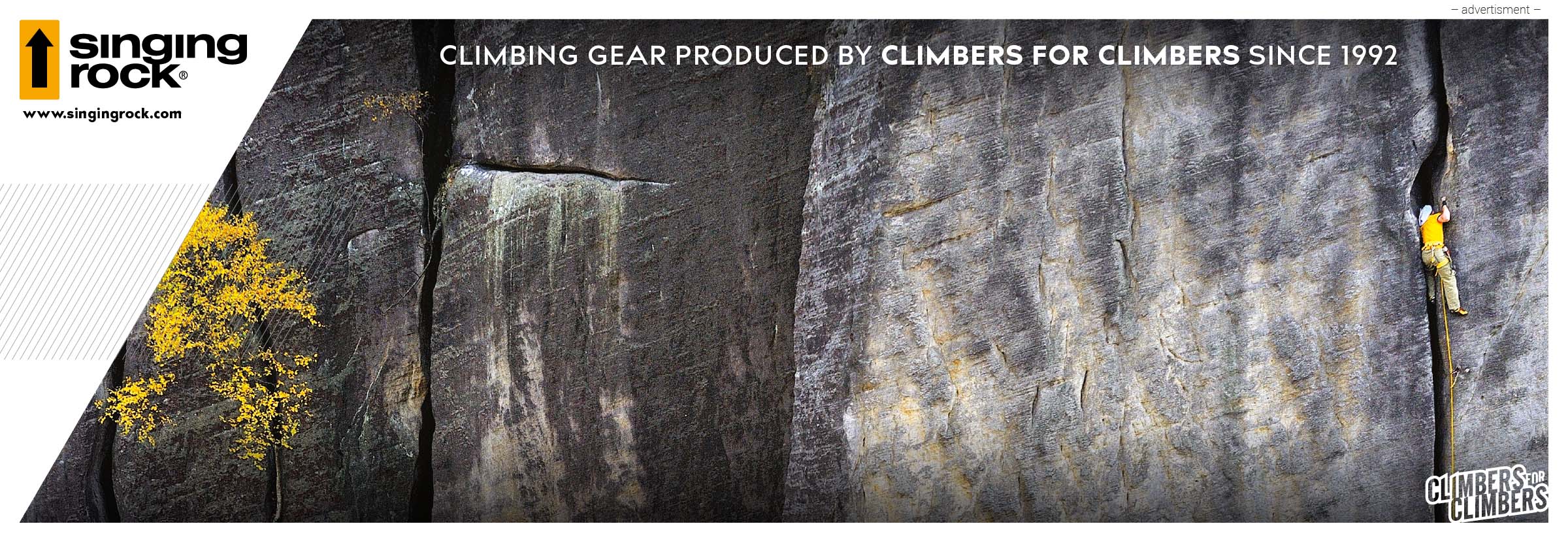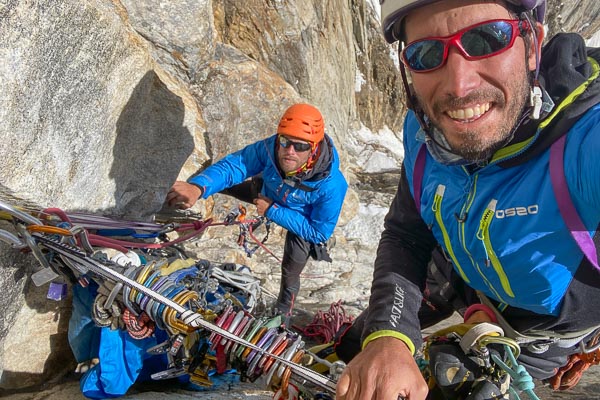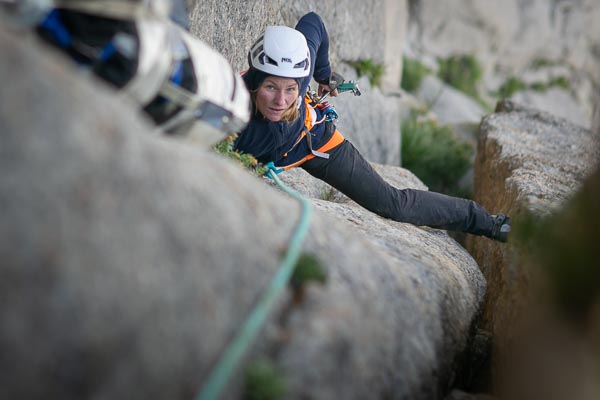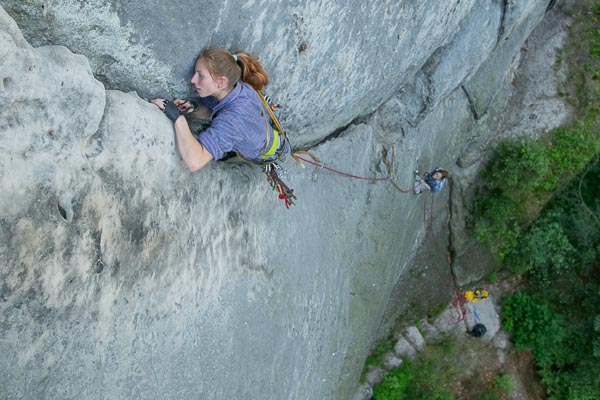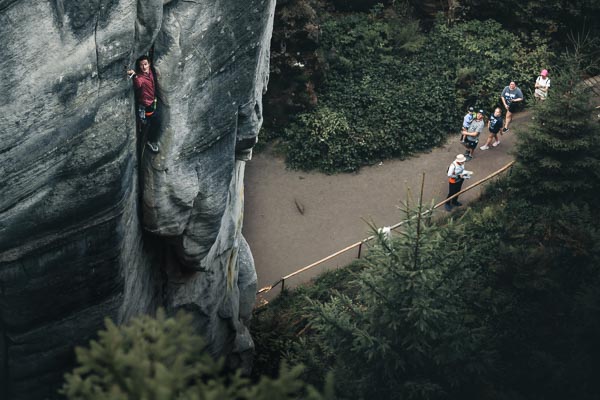DREAMCATCHER, MADE IN CZ
DISCLAIRMER FOR TRAD LOVERS: THIS ARTICLE MIGHT NOT BE ONE OF OUR CLASSIC SANDSTONE ADVENTURE STORIES. TO SEND “CHYTAČ SNŮ” (THE CZECH VERSION OF “DREAMCATCHER”) YOU’LL NEED MOSTLY STRENGTH – ENDURANCE, SOLID FOOT TECHNIQUE, AND A LOVE FOR SLOPERS.
SQUAMISH AND SVOJKOV
Not all the Czech sandstone routes are the classic bold lines that you climb without chalk and protect with slings and knots. There are exceptions – sport routes, where you can enjoy the difficult moves without the lurking fear of a possible grounder.
It was made in the early 90s but we haven’t managed to find out who exactly bolted the line. Anyways, there were three bolts left after the first attempt – sloping at a weird angle and held in place by concrete. At that time, the climbers did not have hooks and electric drills, so the project was left abandoned for following 20 years. First climbers, who tried to finish the project, were Jakub “Miki” Měkota and Aleš “Ali” Petrův. They managed to bolt the rest of the line while leading the route according to the sandstone first-ascent rules. They called it “Chytač Snů” (“Dream Catcher”) because it looks strikingly similar to the world-famous “Dreamcatcher” by Chris Sharma. Similarly to the “original”, you climb from left to right, the slopers are getting you pumped, and you keep heel-hooking the edge with your left foot. It is, however, a bit easier – the locals estimate the grade to be 7c+.
The first woman-ascent (and probably the last one up to this date) was done by Simona Ulmonová in 2012. “You won’t find many routes with so many slopers and heel hooks high above the ground. It is quite a unique route, especially because it is located in the controversial Svojkov area,” laughs Simona recalling her climb.
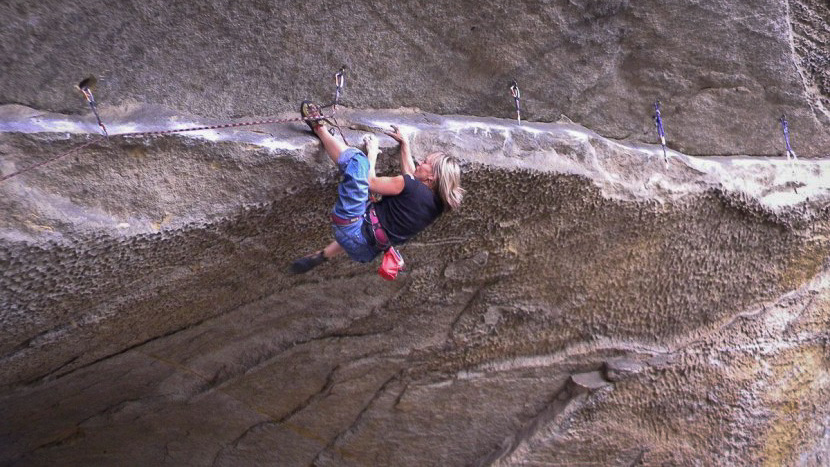
Back then, “the Catcher” was more difficult than today. It was linked to ring of a training route with chopped holds from the 90s and you had to be quite careful in some of the very last moves as they were quite delicate. “It wasn’t easy even after the big ledge,” says Simona. However, the artificial route was destroyed some seven years ago – the chopped holds filled with cement and the rings chopped off. Today, “The Catcher” ends with a final jug at the end of the traverse. Once you get there, you just jump back into the rope, just as Petr “Péca” Jindřich does in the video. In this way, you protect the rock from unnecessary rope friction even when you’re hanging at the bolts and scrub the slopers with a toothbrush.
WHAT DOES “CHYTAČ SNŮ” FEEL LIKE?
– Peter “Péca” Jindřich climbs and speaks –
THE CZECH CATCHER
Most of the climbers, with whom the author of this article spoke, liked the route. Many still haven’t finished it and will be coming back for a full send. “It’s not an easy route you’d just climb OS. You need to master the heel hooks and figure out the right moves. It requires both strength and endurance,” says Jarda “Šakal” Štrumpf, the local from Hruboskalsko area. “I’d like to come back and try it once again.” Jarda Kolář, a local, who has been climbing in Svojkov for last 30 years, confirms that “it’s a beautiful line.” Even the sandstone legend, Jirka “Prcas” Slavík climbed it in an AF style: “I climbed and hung in it in the times before my big grounder.” And what does he think about the route? “I didn’t offend me. It’s a line that could help with the overall quality of the whole area. I would definitely leave it there,” says Prcas.
He comments on the fact that there was quite heated debate about the route among the locals when it was first done. There are still some climbers who would rather see the bolts chopped off. The local area manager Jirka “Jeťák” Vodrážka objected that the bolts are spaced too close together. The guys who made the first ascent, on the other hand, argued that the traverse is not so high above the ground so the additional bolts were needed for at least some safety (when you’re clipping the third bolt, there is quite a risk of taking a grounder or at least hitting a wall). They said that it is common sense to break the rigid rules in this case in order to make such a hard route safer.
Anyway, it would be rude not to cite the opposing side as well. Jeťák told them: “Such a route should never exist on sandstone. You don’t have to bolt new routes everywhere – especially when the number of new climbers as well as the pressure on the nature keeps increasing. For me, this route is more about the bolts than the rock itself – the authors did not respect the sandstone rules for first ascents. And the ethics should be holy to us. If one cannot climb it with the additional protection, he or she should either wait for the right moment or just give it up. Some rocks can remain unclimbed – the geological morphology is fascinating on its own without any human intervention and bolts.”
As you can see, the opinions on “Chytač Snů” differ. But probably everyone would agree that in the Czech context, this is quite a unique route – it offers moves and style of climbing that is hard to find anywhere else. The author of this article thinks that it would be a shame to chop down the bolts after the ten years during which it has been motivating and fascinating so many climbers.
THE CANADIAN CATCHER
The author of the original “Dreamcatcher” is nobody else than the legend himself, Chris Sharma. He made the line called “Dreamcatcher” (5.14d, 9a fr.) in 2005 in Squamish, British Columbia, Canada. This overhanging route requiring superb strength and technique got just a few successful attempts since then. The first repetition was done by Sean McColl in 2009 and the following one by Ben Harnden in 2012. Alex Megos sent the line at the third attempt in 2016, and, up to this date, there is just one more climber, who climbed this amazing traverse in 2018, Jimmy Webb.
Watch the now-legendary video below and allow yourself a moment of nostalgia – in the 90s, this footage inspired so many climbers worldwide. The footage has a brilliant cut. It captures the fascinating line, the amazing climber, and the stoke, with the background of some fine bangers. It became a true cult movie – today, it has more than three million views:
Even Adam Ondra tried the route on his visit to Canada. He gave it a promising flash attempt (see the video) but he fell some six moves under the final jug. “In my second attempt, I slipped somewhere in the middle when I was shaking off. And since I had to get to Vancouver on that very day, I could rest for only about 15 minutes,” recalls Adam. In his last attempt, he fell at the exact same spot as for the first time. “After that, I was K.O.”
Like the Czech “Chytač” the original “Dreamcatcher” requires the proper conditions – knowing when to go for an attempt makes at least half of the success. Adam continues: “In Squamish, it rains often. The temperature was good on that day, but the crack before the final crux was pretty wet. In the summer, it rains a bit less and the crack dries up. On the other hand, it might be too hot then… It’s not easy.”
Of course the north-bohemian climbers had to ask Adam if he wants to come and give “The Catcher” a try.
“Yeah, it looks great.” (he laughs) “The Czech version could have a slightly different character and feel than the original. The Canadian “Catcher” is all about the last three moves that are actually not so nice. It is basically a campus session on sloping crimps without any good footholds.”

is woven a net or web. Traditionally they are hung
over a cradle or bed as protection. (p: Wikipedia)
VÍTEK SOUKUP REMEMBERS
Very few routes provoked such a heated discussion as “Chytač Snů”.
Despite that, I’ve first heard about it in November 2020, when my friend (not a fan of sandstone) mentioned it briefly. I immediately ran to my computer, watched all the videos, and read the hole discussion surrounding the controversial line. And this is how my obsession
(which lasts) has started.
I never thought I’d be climbing a) in winter b) on sandstone c) Xa. And suddenly I’m there, after five or six trips, I’m still working on the beta and trying to find the perfect friction within the snowy season. How should I put it… the Czech “Dream Catcher” caught not only my dreams but my whole personality as well, and even some of my friends I brought along. And I believe that when the day comes and I finally push it to the end,
it will be an unforgettable experience.
